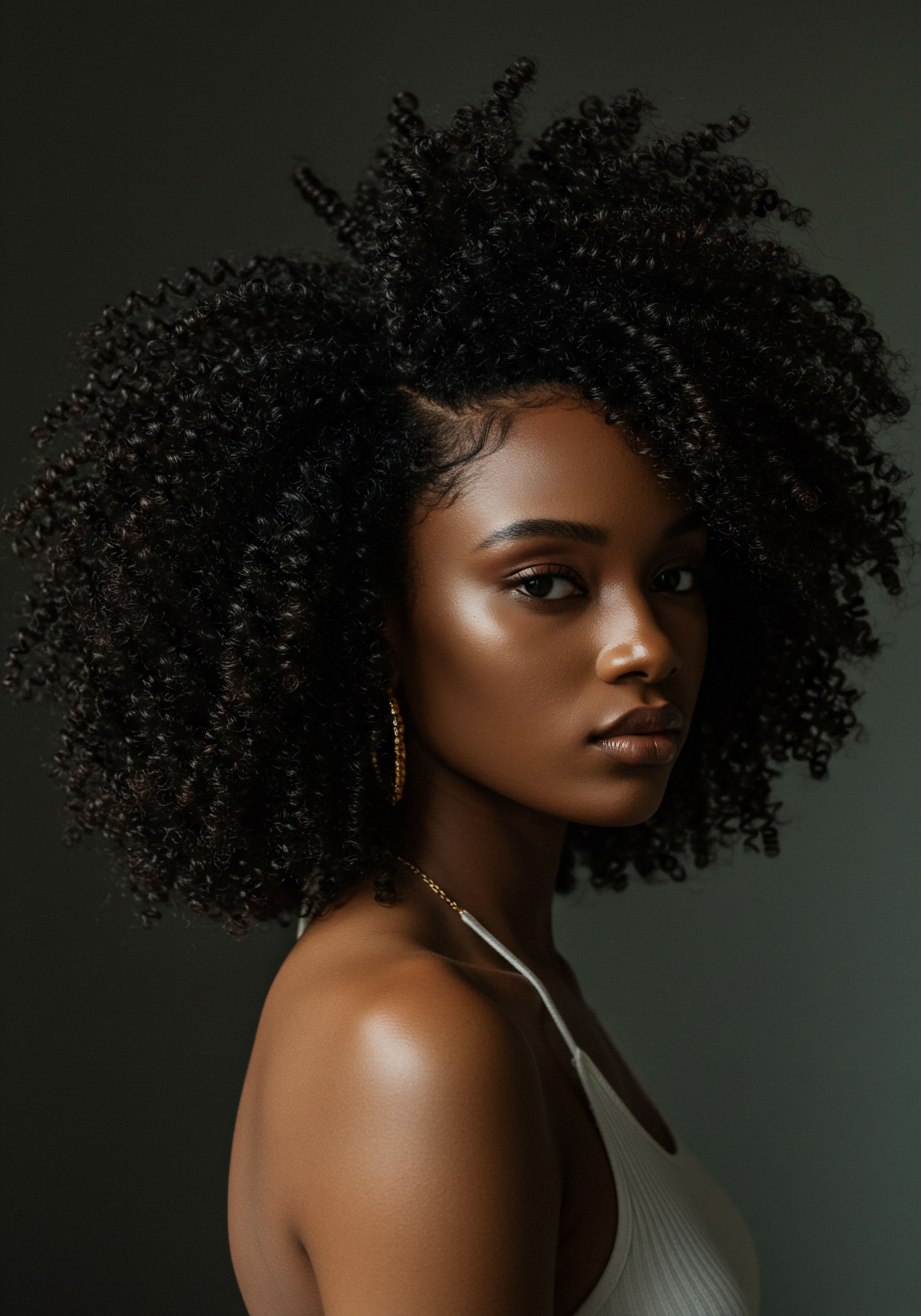
Roots
The quiet of night, often viewed as a simple pause in our busy days, holds a profound influence over the vitality of our hair. For those with textured hair, this nocturnal period, far from being merely a time of rest, becomes a crucible where strands either find renewal or succumb to the subtle stresses that lead to breakage. Understanding how sleep impacts hair’s integrity begins with appreciating the intricate biological processes that unfold while we slumber, and how these processes are particularly significant for curls, coils, and waves. Our hair, a living extension of ourselves, responds to the rhythms of our bodies, and its well-being is deeply intertwined with the quality of our sleep.

Hair’s Delicate Structure and Its Nighttime Vulnerability
Textured hair possesses a unique helical structure, characterized by its varying degrees of curl, coil, and wave patterns. This very architecture, while beautiful, also presents inherent vulnerabilities. The bends and twists along the hair shaft create points where the cuticle layers, the protective outer scales of the hair, can lift or become uneven.
This unevenness makes textured strands more susceptible to external aggressors, and the hours spent in bed offer a silent, yet persistent, challenge. Friction, pressure, and even subtle shifts in moisture during sleep can exacerbate these structural predispositions, leading to breakage that often goes unnoticed until morning styling.
The very shape of a textured strand means its natural oils, produced by the scalp, struggle to travel down the entire length of the hair shaft. This can leave the ends, and even mid-lengths, prone to dryness. Dry hair, as we know, is less elastic and more brittle, making it a prime candidate for breakage. When we consider the rubbing against various surfaces during sleep, this dryness becomes a significant concern, turning minor friction into a force capable of snapping delicate strands.
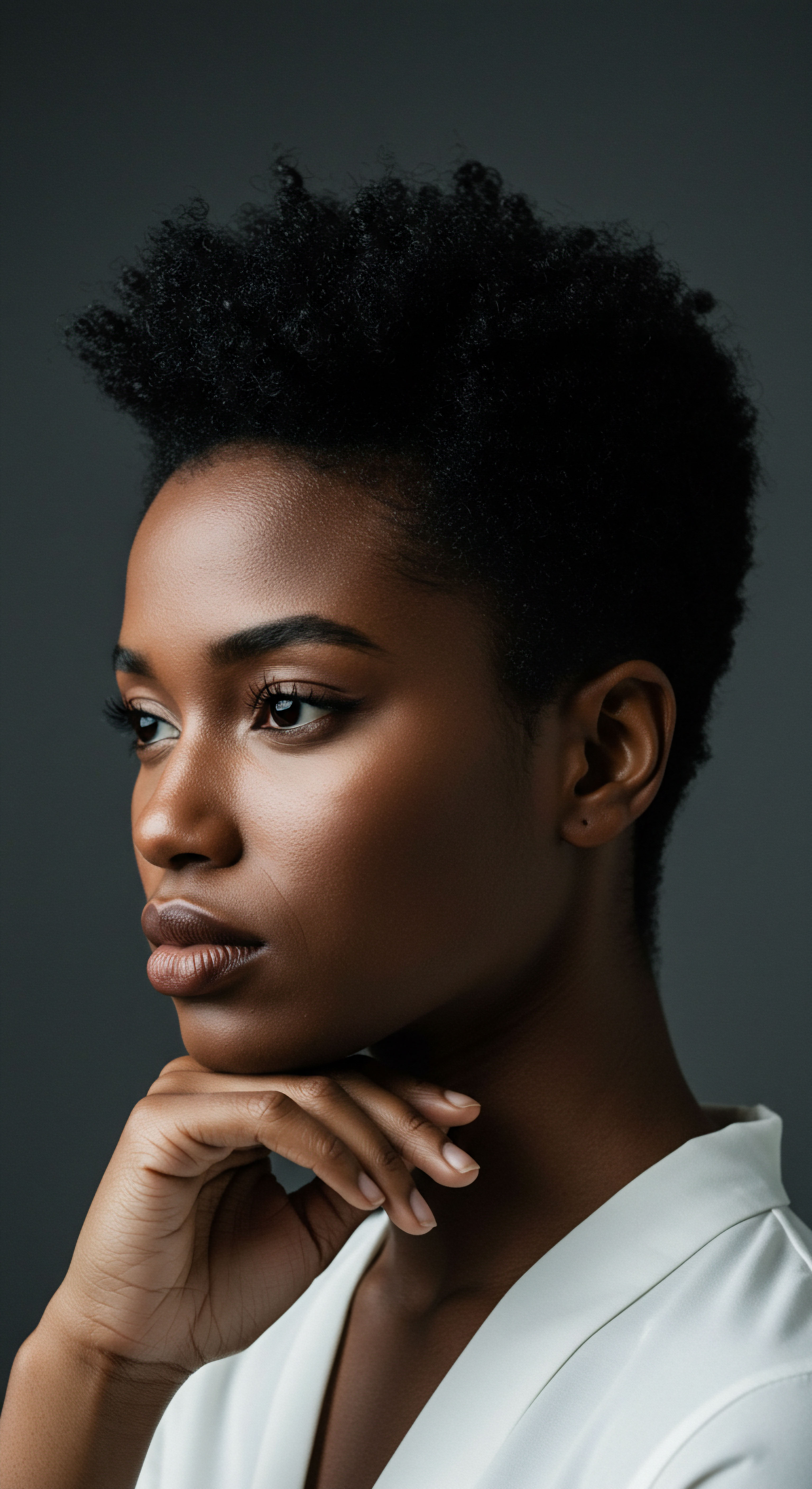
Hair Growth Cycles and Nightly Influences
Hair growth is a cyclical journey, moving through distinct phases ❉ anagen, catagen, and telogen. The Anagen Phase marks active growth, where hair follicles busily produce new hair. The Catagen Phase is a brief transition, signaling the end of active growth, as the follicle shrinks.
Finally, the Telogen Phase is a period of rest, after which the hair sheds to make way for new growth. This biological rhythm is closely tied to our body’s internal clock, often called the circadian rhythm.
During deep sleep, the body dedicates itself to repair and regeneration. This includes a heightened blood flow to the scalp, delivering vital oxygen and nutrients to the hair follicles. Hormones that support growth, such as growth hormone and melatonin, are released during these hours. When sleep is consistently disrupted, this finely tuned cycle can falter.
The anagen phase may shorten, while the telogen phase may extend, resulting in increased shedding and a slower rate of growth. This imbalance, a direct consequence of insufficient or restless sleep, can contribute significantly to the perception of hair thinning and, ultimately, to breakage of weakened strands.
The nightly journey through sleep’s restorative phases is a silent orchestrator of hair’s health, particularly for textured strands seeking renewal.

Understanding Hair’s Sleep Lexicon
To truly grasp the dialogue between sleep and hair breakage, a shared understanding of terms proves beneficial. Here are some concepts that shed light on this connection:
- Cuticle Integrity ❉ The condition of the outermost layer of the hair shaft, which acts as a protective shield. When compromised, hair is vulnerable to damage.
- Hair Elasticity ❉ The ability of a hair strand to stretch and return to its original shape without breaking. Well-hydrated hair possesses greater elasticity.
- Frictional Stress ❉ The damage caused by repeated rubbing of hair against surfaces, leading to raised cuticles and eventual breakage.
- Telogen Effluvium ❉ A temporary form of hair shedding often triggered by significant stress, including that caused by sleep deprivation.
- Scalp Microcirculation ❉ The blood flow within the tiny vessels of the scalp, essential for delivering nutrients to hair follicles.
The interplay of these factors creates a complex picture, yet a clear message emerges ❉ the quality of our sleep directly influences the foundational health of our hair, especially for textured hair types that demand gentle care and consistent nourishment.
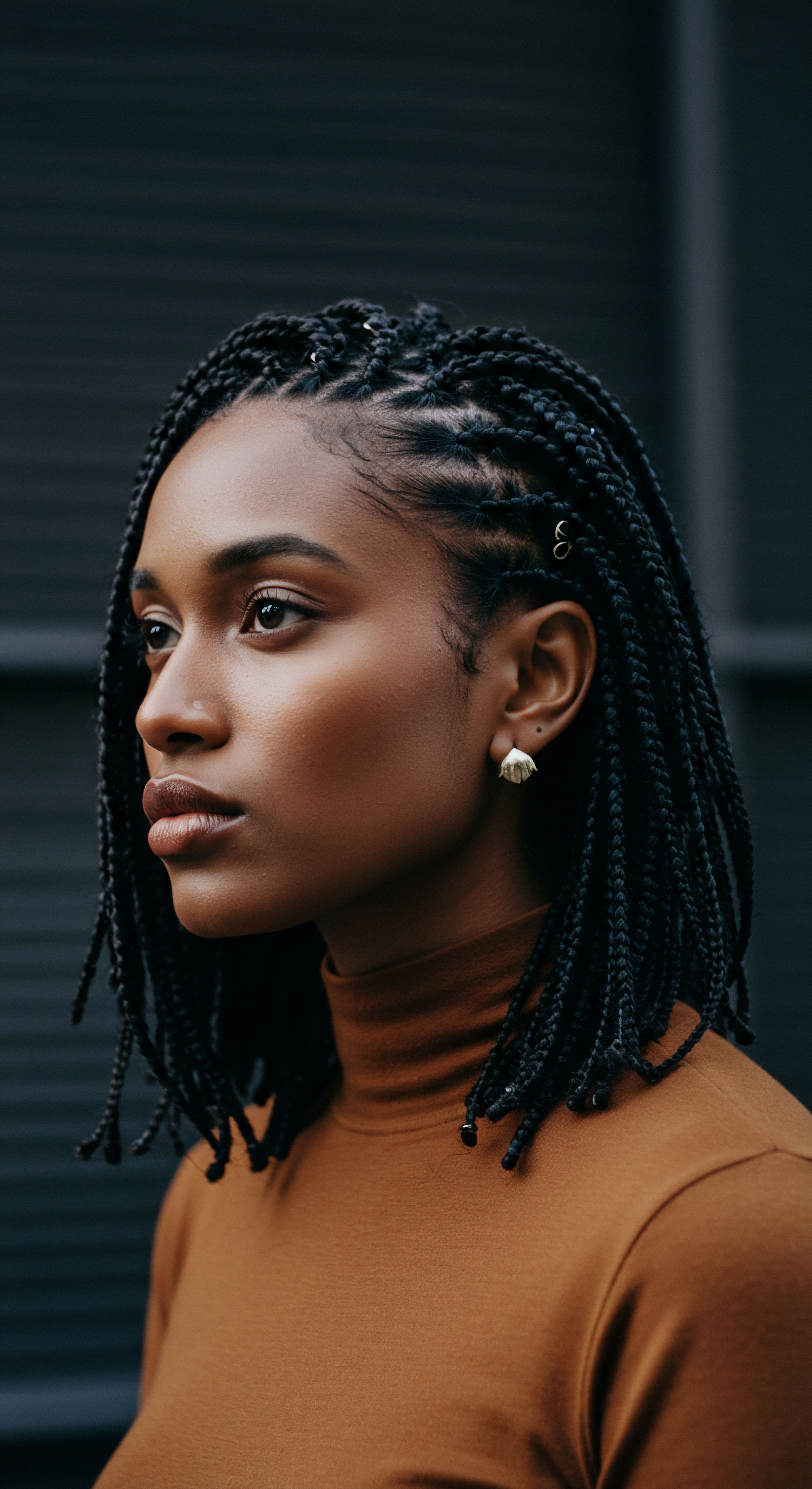
Ritual
Stepping from the fundamental understanding of hair’s nightly biology, we arrive at the practical wisdom of care. The quiet hours of slumber, far from being passive, present a canvas for intentional practices that safeguard our strands. For those with textured hair, this shift from scientific knowledge to daily ritual is not merely about preventing breakage; it is about honoring hair’s inherent beauty and resilience through thoughtful action. Our routines before bed, the choices we make for our sleep environment, and the tools we select all contribute to a sanctuary where hair can rest, undisturbed, ready for the day ahead.
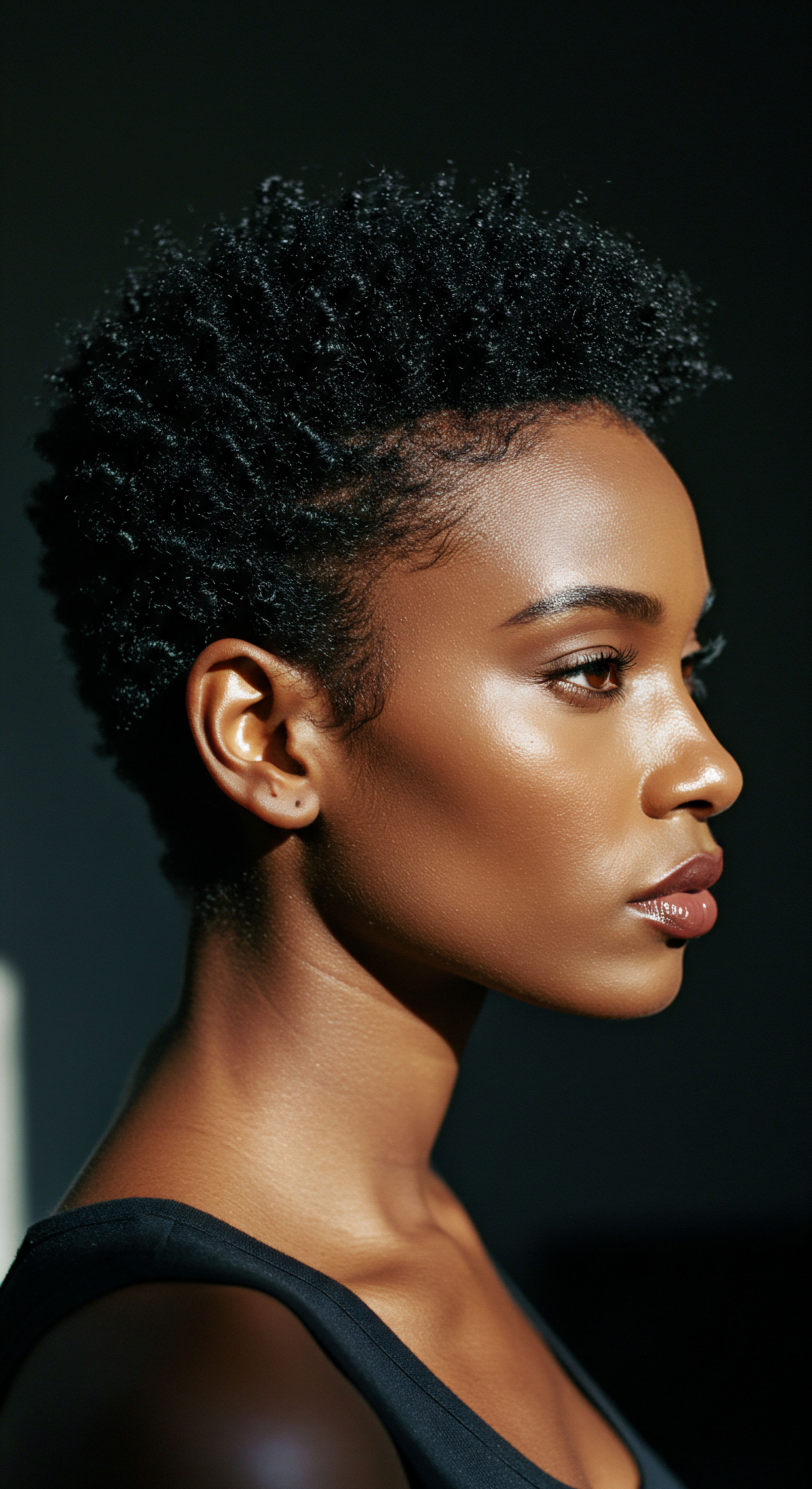
Crafting a Nighttime Sanctuary for Strands
The environment in which we sleep plays a surprisingly significant role in hair health. Many common bedding materials, like cotton pillowcases, possess a rough surface. This texture, while seemingly soft to the touch, can act as an abrasive, snagging and pulling at delicate hair strands throughout the night. For textured hair, with its naturally raised cuticles and tendency towards dryness, this friction can be particularly detrimental, leading to frizz, tangles, and ultimately, breakage.
Consider the impact of constant movement during sleep. Each toss and turn, each shift in position, can create tension on the hair shaft. This constant mechanical stress, compounded by friction, gradually weakens the hair’s outer layer, leaving it vulnerable to snapping. The goal, then, becomes one of minimizing this friction and ensuring hair glides rather than snags.
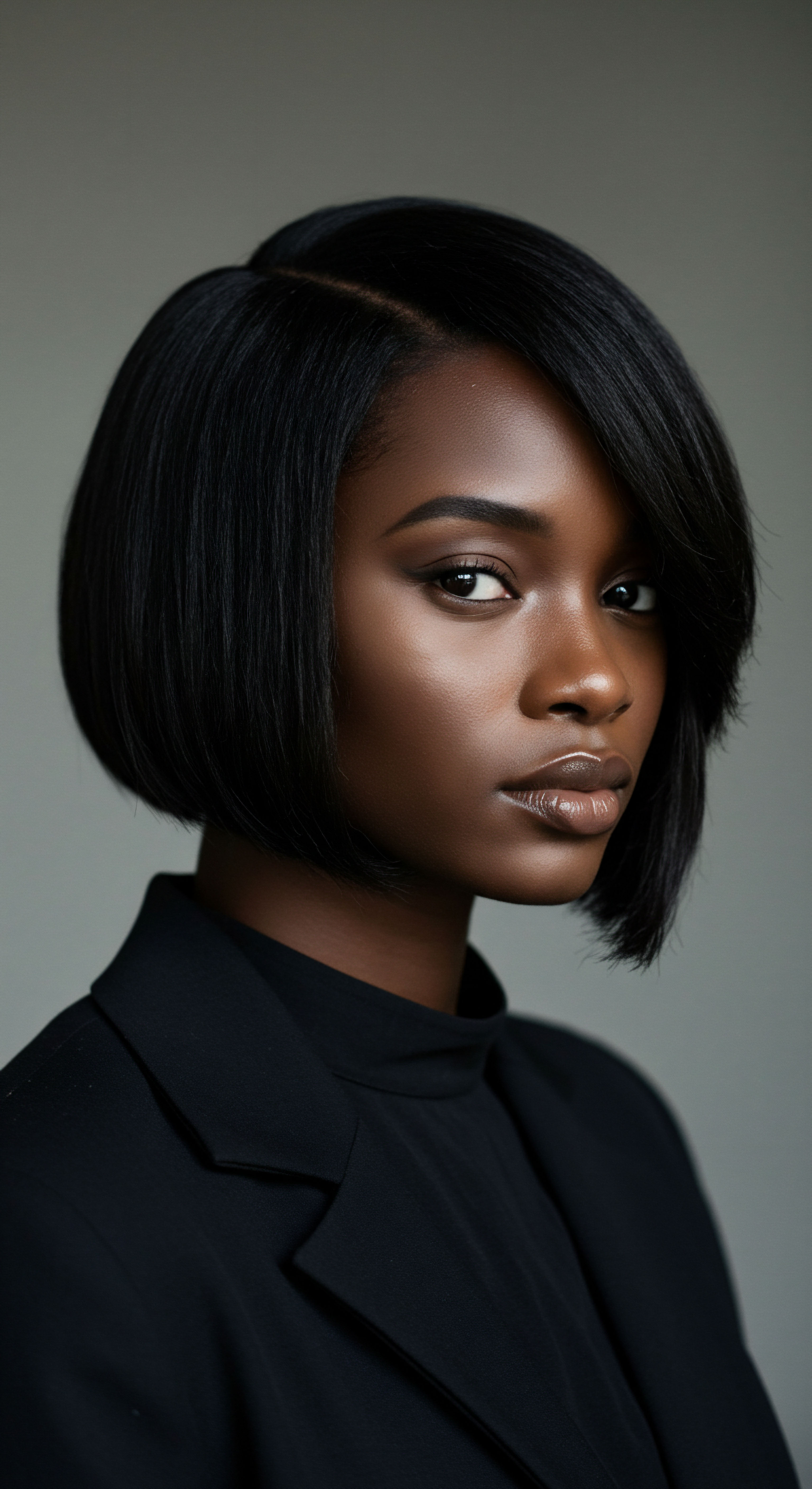
What Does a Silk Pillowcase Offer?
A simple yet impactful adjustment to the sleep environment involves the pillowcase itself. Silk, with its smooth, tightly woven fibers, offers a stark contrast to cotton. This smooth surface reduces friction by a significant margin, allowing hair to glide freely across the pillow as you move.
The benefits extend beyond mere friction reduction. Silk is less absorbent than cotton, meaning it helps hair retain its natural moisture and any applied products. For textured hair, which often battles dryness, this moisture retention is a considerable advantage, keeping strands hydrated and thus more elastic and less prone to breakage.
| Material Cotton |
| Friction Level High |
| Moisture Absorption High |
| Hair Benefits Can cause frizz, tangles, dryness, breakage |
| Material Silk |
| Friction Level Low |
| Moisture Absorption Low |
| Hair Benefits Reduces frizz, tangles, breakage; retains moisture |
| Material Satin (Polyester) |
| Friction Level Low to Medium |
| Moisture Absorption Medium |
| Hair Benefits Reduces friction, offers some moisture retention |
| Material Silk generally provides superior benefits for hair due to its unique fiber structure. |
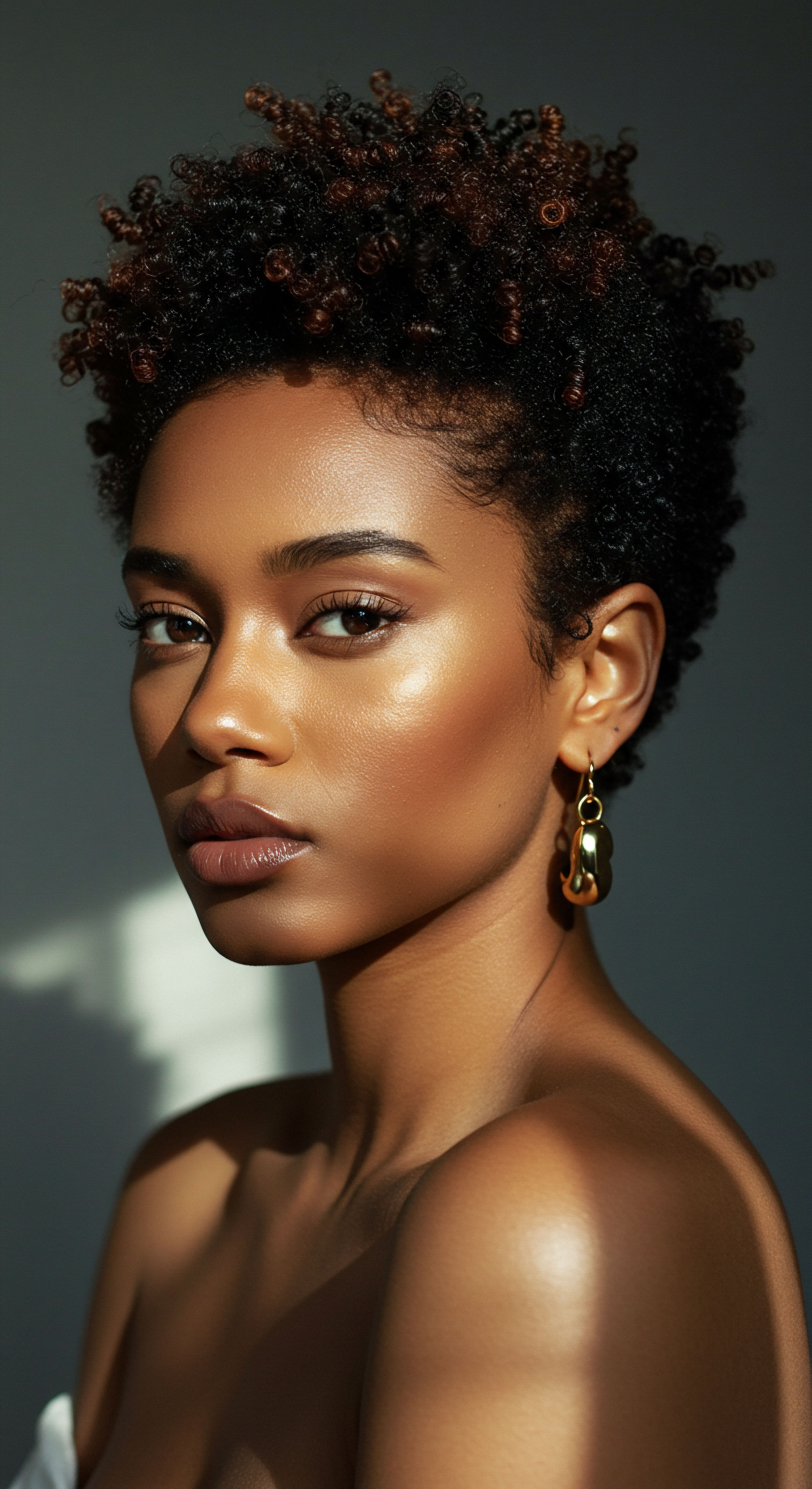
Protective Styles and Bonnet Wisdom
Beyond the pillowcase, the way hair is styled before bed offers another layer of defense. Loose, protective styles minimize movement and tangling, keeping strands bundled and less exposed to frictional forces. Options such as a loose braid, a soft bun placed at the crown, or even a simple pineapple (a high, loose ponytail) can make a substantial difference. The aim is to gather the hair without creating tension at the scalp or hair shaft, allowing it to rest in a contained, protected state.
Thoughtful nightly preparations, from silk pillowcases to gentle protective styles, serve as a quiet act of devotion for healthy textured hair.
For generations, particularly within Black and Afro-Caribbean cultures, head coverings like bonnets and silk scarves have been a cornerstone of nighttime hair care. This practice is rooted in practical wisdom, recognizing the need to shield textured hair from damage and preserve its moisture. These coverings provide a physical barrier, reducing friction against bedding and helping to maintain the integrity of hairstyles, thus minimizing the need for daily manipulation.
When selecting a bonnet or scarf, the material matters. Silk or satin are the preferred choices due to their smooth surfaces, mirroring the benefits of silk pillowcases. These materials allow hair to move without snagging, preventing frizz and breakage. The choice of covering also speaks to a deeper cultural continuity, a tradition passed down, reflecting a shared understanding of hair’s vulnerability and the importance of its protection.
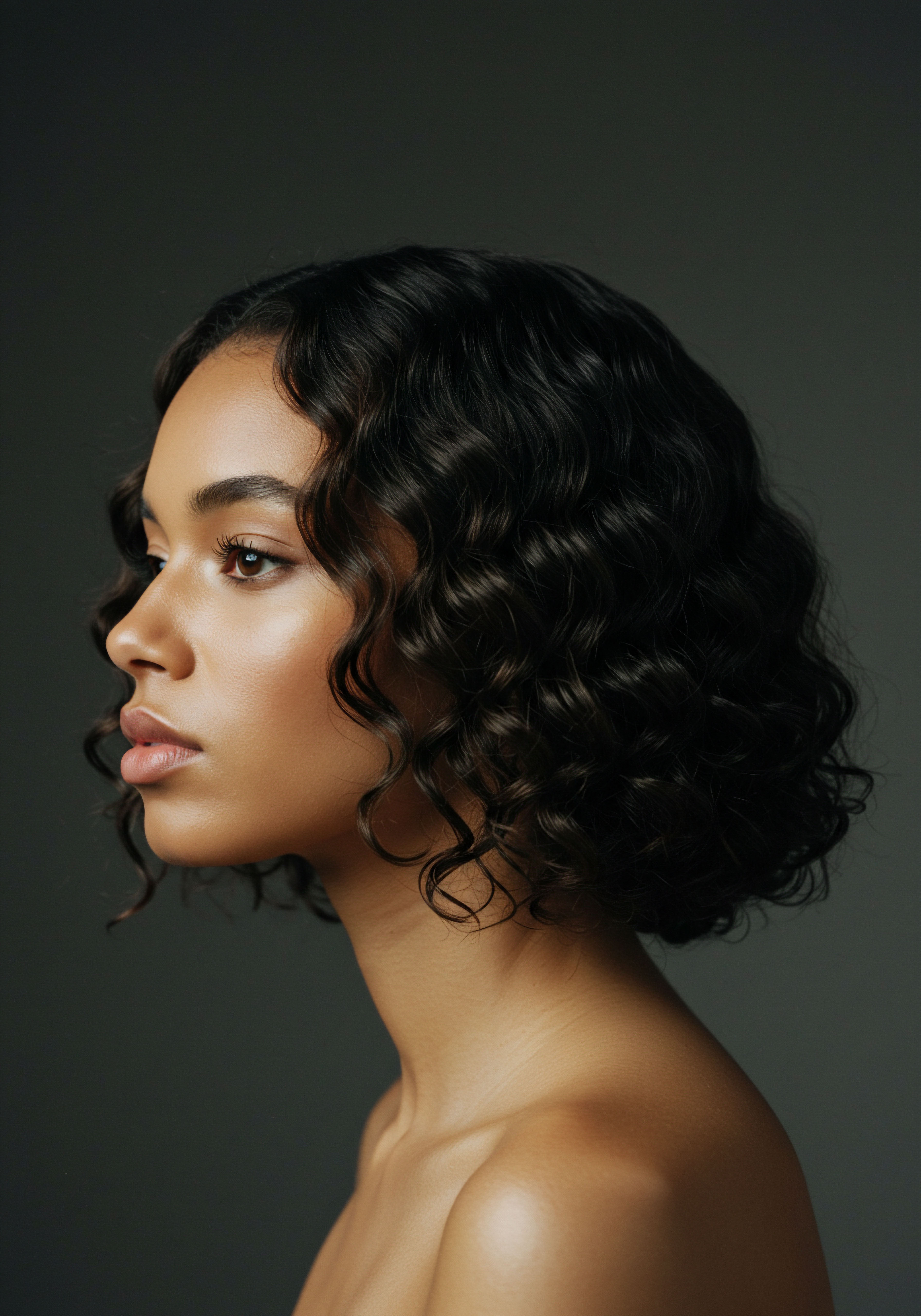
What Nighttime Practices Support Hair Resilience?
A consistent nighttime hair routine can significantly contribute to hair’s resilience. Here are some elements to consider:
- Ensure Hair is Dry ❉ Wet hair is more vulnerable to stretching and snapping. Allow hair to air dry completely or use a diffuser on a cool setting before bed.
- Apply a Light Leave-In Conditioner or Oil ❉ This adds a layer of moisture and lubrication, further reducing friction and helping to seal the cuticle.
- Avoid Tight Hairstyles ❉ Any style that pulls or creates tension at the scalp or hair shaft should be avoided. This prevents traction breakage.
- Gentle Detangling ❉ A wide-tooth comb or fingers can gently detangle hair before bed, minimizing morning knots and the force required to remove them.
These practices, when integrated into a regular rhythm, transform the simple act of sleeping into a dedicated period of hair care, a ritual that speaks to a deeper appreciation for the unique needs of textured strands.

Relay
Moving beyond the visible practices of nightly hair care, we arrive at a more profound consideration of sleep’s systemic impact on hair’s health. This exploration transcends mere surface-level protection, delving into the intricate biological and even cultural dialogues that shape our strands while we rest. The connection between our deepest slumber and the resilience of our hair is far more nuanced than simple friction, inviting us to consider the body as an interconnected system where one imbalance can echo throughout.

The Silent Systemic Effects of Sleep Disruption
Our bodies, including our hair follicles, operate on a finely tuned internal clock, the circadian rhythm. This rhythm governs not only our sleep-wake cycles but also numerous physiological processes, including hormone production, cell repair, and even the activity of hair follicle stem cells. When sleep is consistently disrupted, this delicate biological timing falters, and the consequences can manifest in hair health.
One significant consequence is the elevation of stress hormones, particularly cortisol. Sleep deprivation prompts the body to produce more cortisol, and chronically high levels of this hormone can negatively influence the hair growth cycle. Cortisol can prematurely push hair follicles into the resting (telogen) phase, leading to increased shedding, a condition known as telogen effluvium. This physiological stress response, silent yet potent, directly contributes to hair thinning and breakage, often before any external signs of damage become apparent.
Moreover, sleep is the period when the body actively regenerates cells and tissues. This includes the hair matrix keratinocytes, the rapidly dividing cells responsible for forming the hair shaft. During deep sleep, protein synthesis occurs, providing the building blocks for keratin, the primary protein composing hair. A consistent lack of restorative sleep can impair this synthesis, leading to weaker, more brittle strands that are predisposed to breakage.
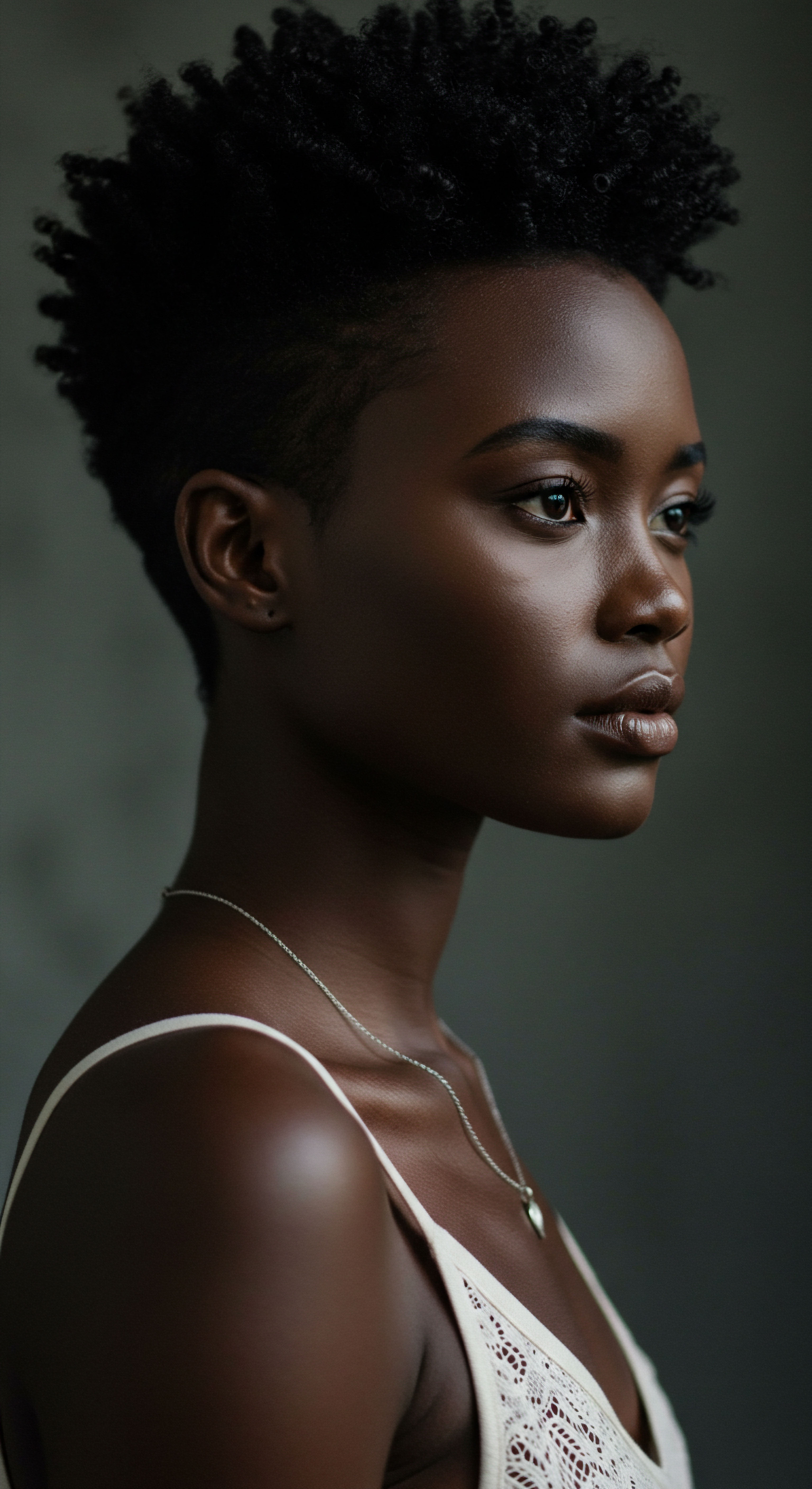
How Does Sleep Quality Affect Hair Follicle Metabolism?
The metabolic activity within hair follicles is remarkably high during the active growth phase. This activity demands a steady supply of nutrients and oxygen, delivered via the scalp’s microcirculation. When sleep is compromised, blood flow to the scalp can diminish, depriving follicles of these essential elements. A reduced supply of nutrients means the hair follicle struggles to produce strong, healthy hair, resulting in finer, more fragile strands that are more susceptible to breaking.
Beyond nutrient delivery, sleep influences the balance of various hormones critical for hair health. Melatonin, often associated with sleep regulation, also plays a direct role in hair follicle cycling. It helps synchronize the hair cycle, prolonging the active growth phase and offering antioxidant protection to follicles.
Disruptions in melatonin production due to poor sleep can therefore indirectly affect hair growth and resilience. Other hormones, including growth hormone, estrogen, and testosterone, also see their levels regulated during sleep, and imbalances can impact hair health.
The deep, restorative cycles of sleep are not just for mental clarity; they are a vital biological process directly influencing hair follicle vitality and structural integrity.
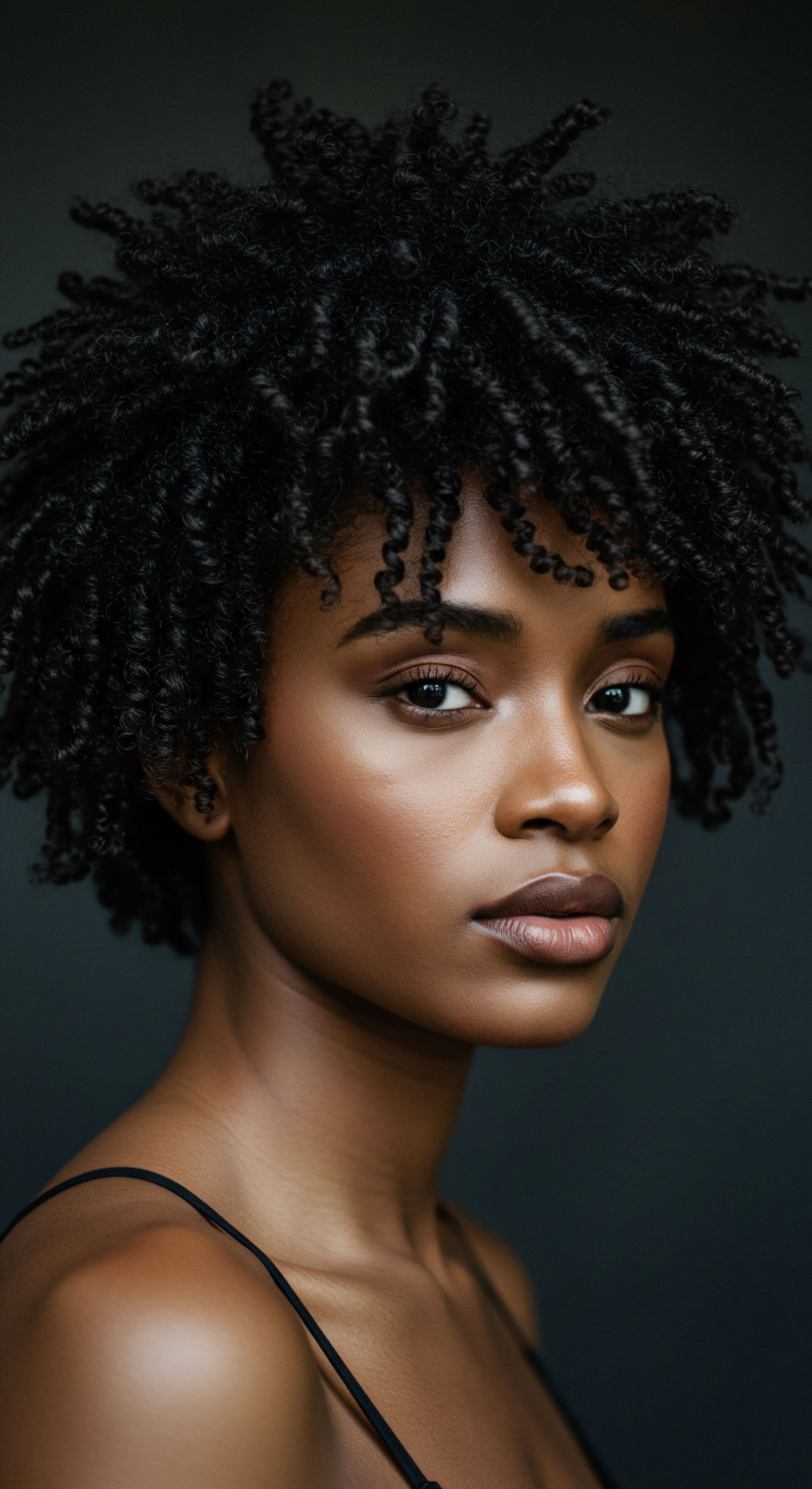
The Circadian Rhythm and Hair’s Daily Growth Pattern
A fascinating aspect of hair biology, often overlooked, is its own circadian rhythm. Studies have shown that hair follicles possess their own internal clocks, with certain genes (like BMAL1 and PER1) regulating cell activity within the follicle. This internal timing influences the rate of hair growth throughout the day. For example, research has indicated that hairs grow faster in the morning than in the evening due to this daily mitotic rhythm.
Disruptions to the body’s overall circadian rhythm, whether from irregular sleep schedules, shift work, or chronic sleep deprivation, can misalign the hair follicle’s internal clock. While the exact long-term consequences on hair breakage are still being explored, a disharmony in these cellular rhythms could theoretically compromise the optimal conditions for hair shaft formation and repair, potentially leading to weakened hair over time.

Can Sleep Deprivation Impact Hair’s Protein Structure?
Hair is primarily composed of keratin, a resilient protein. The synthesis of this protein is a complex process that relies on adequate cellular resources and a healthy physiological environment. Sleep, as a period of heightened protein synthesis and cellular repair, is fundamental to this.
Chronic sleep deprivation can impair the body’s ability to produce and maintain healthy keratin. While direct studies specifically on sleep deprivation’s impact on keratin breakage in textured hair are still emerging, the general understanding is that impaired protein production can lead to a weaker, less robust hair shaft.
One study highlights a broader systemic impact ❉ sleep deprivation can negatively affect collagen production and its integrity in the skin. Given that hair and nails are modifications of the skin, also containing collagen, this suggests a potential indirect effect on the structural proteins that support healthy hair growth and resilience. A reduction in the overall quality of these foundational proteins could render hair more susceptible to breakage from even minor mechanical stress.
For instance, a study published in the journal Aging-US in 2017 indicated that mutations in core circadian clock genes, such as Per2, could lead to an increase in hair graying and hair loss following gamma irradiation. While this particular research focuses on radiation-induced changes, it underscores the profound influence of the circadian clock on hair follicle health and its susceptibility to damage. It hints that even subtle, chronic disruptions to our sleep-wake cycle could have long-term implications for hair’s vitality and its ability to withstand external stressors, including the daily friction it experiences. This connection suggests that sleep’s role extends beyond immediate physical protection, delving into the very genetic and cellular programming of hair resilience.

Cultural Echoes of Nighttime Hair Care
The scientific understanding of sleep’s impact on hair finds a parallel in centuries of cultural wisdom, particularly within communities with textured hair. The practice of protecting hair at night, through wraps, bonnets, or specific styling, is not merely a modern trend but a tradition steeped in knowledge of hair’s needs. These practices predate scientific studies on friction and moisture retention, yet they intuitively address the very vulnerabilities that modern research now explains.
From African communities where headwraps signified status and protection, to Asian cultures where silk wraps preserved intricate styles, the nightly ritual of hair care has been a quiet act of preservation. This collective wisdom, passed down through generations, highlights a deep, experiential understanding of how hair responds to its environment, especially during sleep. It reminds us that while science quantifies, lived experience often pioneers the path to practical solutions.
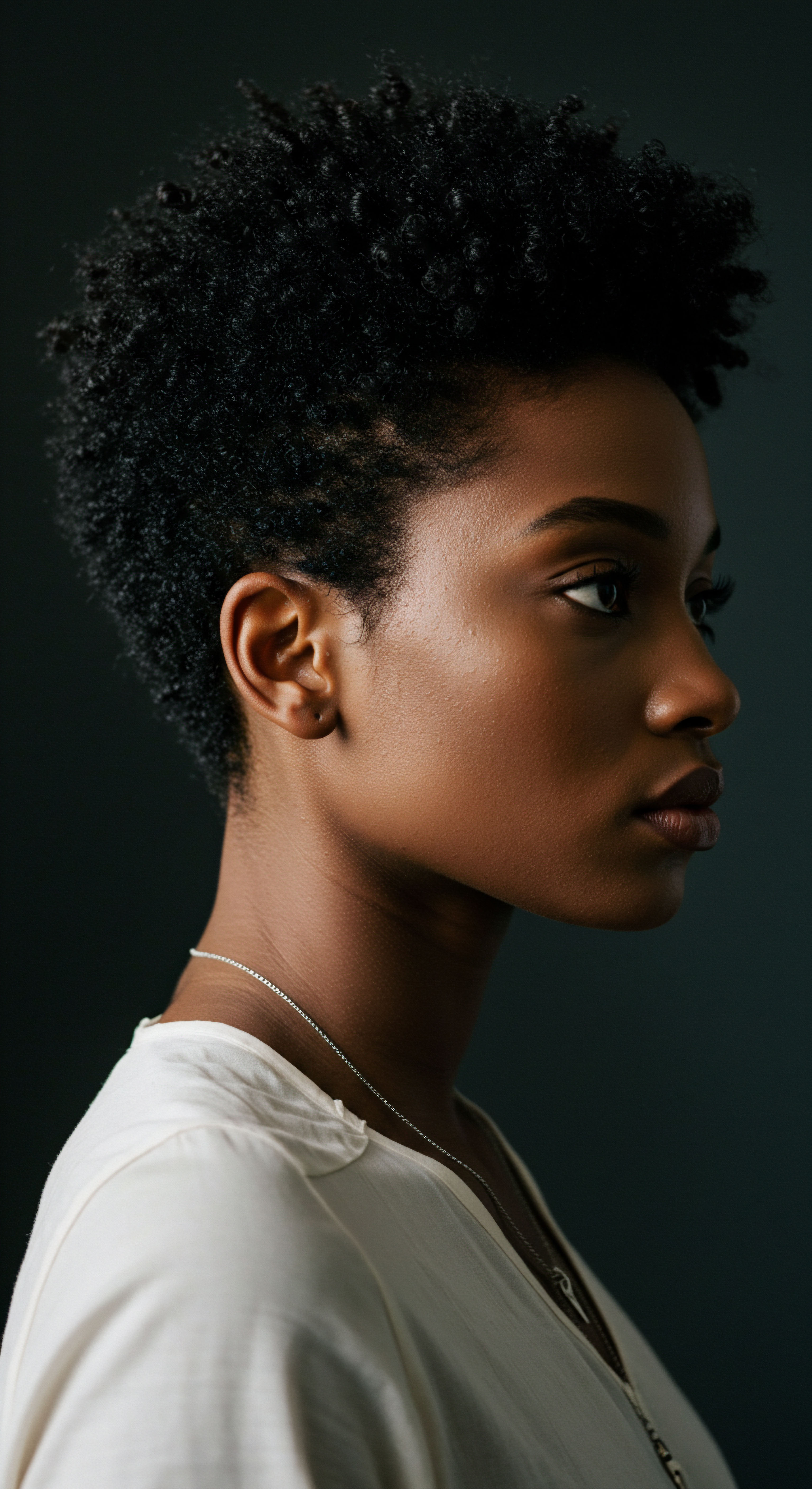
Reflection
The quiet hours of our nightly slumber hold a profound and often underestimated influence over the health and resilience of our hair. From the intricate cellular dances within the follicle, governed by our body’s internal clock, to the gentle embrace of a silk bonnet, sleep is not merely a pause in our day, but an active period of renewal for our strands. For those with textured hair, this nocturnal period becomes a particularly potent time for either restoration or subtle damage, underscoring the importance of thoughtful, consistent care. By honoring our body’s need for rest and integrating protective practices into our evening rituals, we contribute to hair that stands stronger, shines brighter, and remains more vibrant, reflecting a deep connection between our inner well-being and outer beauty.
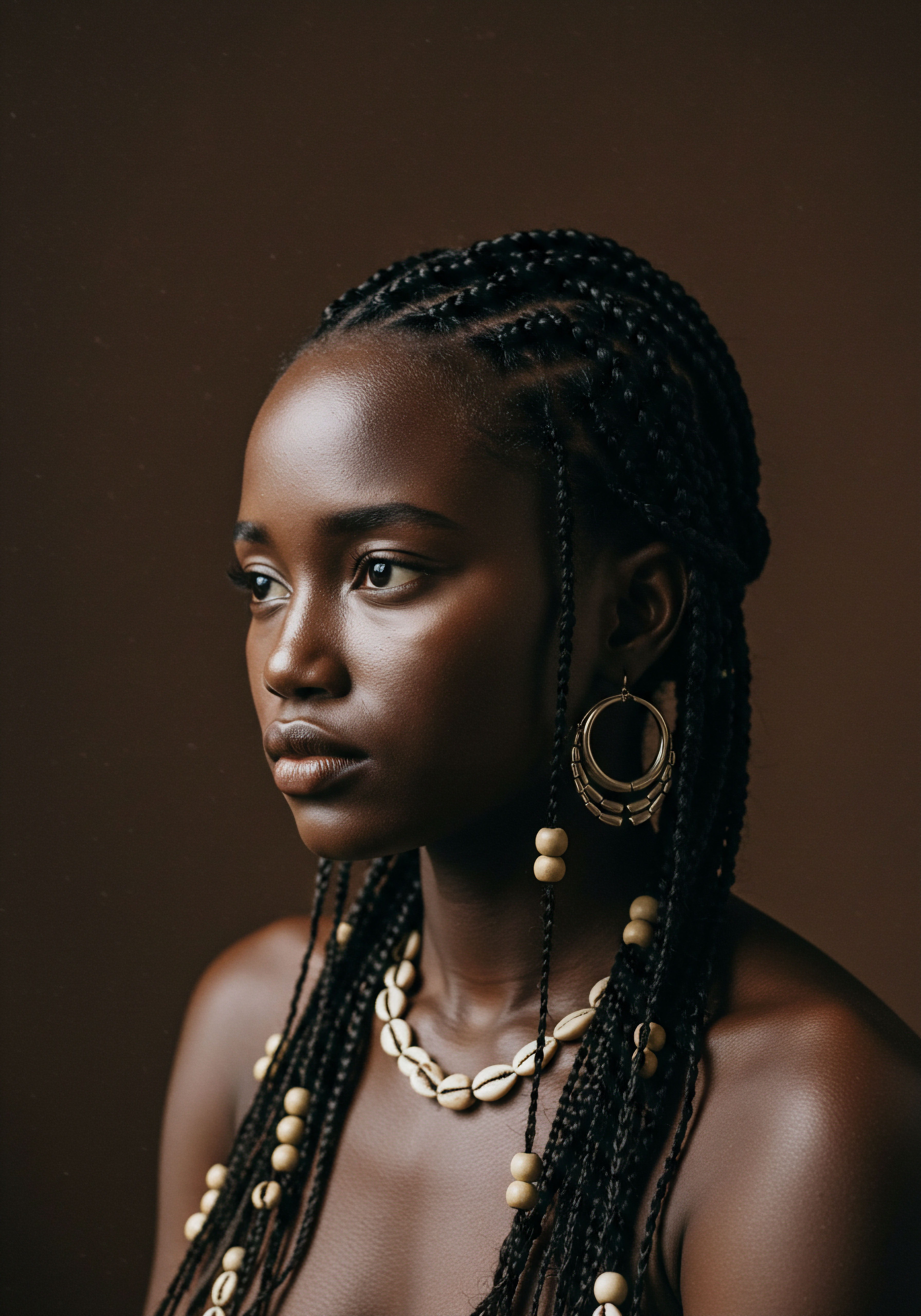
References
- Baron, E. D. (2019). The Effects of Sleep Deprivation on Skin Health. Journal of the American Academy of Dermatology, 80(5), AB15.
- Babadjouni, A. Reddy, M. & Zhang, H. (2023). Melatonin ❉ A Game-Changer for Hair Growth and Health – In-Depth Analysis. Corti Hormonal Research.
- Gaddameedhi, S. et al. (2017). Circadian Clock Genes Contribute to the Regulation of Hair Follicle Cycling. PLOS Genetics, 13(1), e1006561.
- Lin, K. K. et al. (2013). Local circadian clock gates cell cycle progression of transient amplifying cells during regenerative hair cycling. Proceedings of the National Academy of Sciences, 110(21), 8613-8618.
- O’Brien, J. & Johnson, D. A. (2021). How a Hair Wrap Routine Protects More Than Just My Hair. Sleep.com.
- Pohland, R. C. et al. (2024). Melatonin’s Role in Hair Follicle Growth and Development ❉ A Cashmere Goat Perspective. Animals, 14(11), 1630.
- Rushton, D. H. (2002). Nutritional factors and hair loss. Clinical and Experimental Dermatology, 27(5), 396-404.
- Youn, S. W. et al. (2012). The effects of topical melatonin on human hair growth. Journal of Pineal Research, 52(4), 434-441.